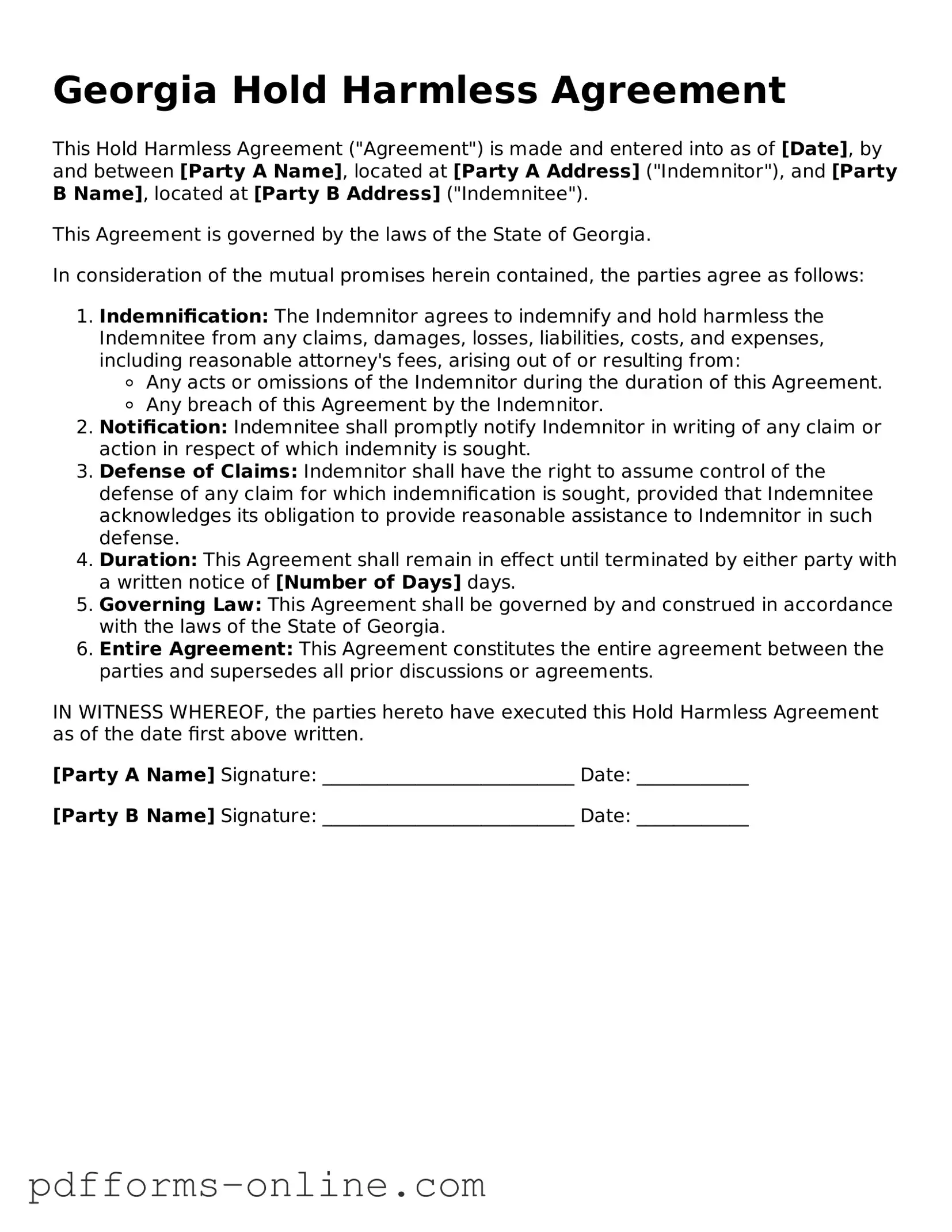The Indemnity Agreement is similar to the Hold Harmless Agreement in that both documents aim to protect one party from legal liability. In an Indemnity Agreement, one party agrees to compensate another for any losses or damages incurred. This is often used in business transactions where one party takes on the risk of potential claims or lawsuits that may arise from the actions of another party.
The Liability Waiver is another document that shares similarities with the Hold Harmless Agreement. A Liability Waiver releases one party from responsibility for certain risks associated with an activity. It is commonly used in recreational activities, where participants acknowledge the risks involved and agree not to hold the provider responsible for injuries or damages that may occur.
The Release of Liability form also serves a similar purpose. This document allows individuals to relinquish their right to pursue legal action against another party for specific incidents. It is often utilized in events or activities where participants may face potential hazards, ensuring that the organizers are not held liable for accidents.
The Service Agreement may resemble the Hold Harmless Agreement in that it outlines the responsibilities and liabilities of both parties involved. While it primarily focuses on the services provided, it can include clauses that address liability and indemnification, ensuring that one party is protected from claims arising from the other party's actions.
The Non-Disclosure Agreement (NDA) can also be compared to the Hold Harmless Agreement in terms of protecting sensitive information. Although its primary purpose is to prevent the sharing of confidential information, it often includes clauses that limit liability for breaches, thereby safeguarding the parties involved from potential legal repercussions.
The Construction Contract frequently incorporates elements similar to those found in a Hold Harmless Agreement. In construction projects, these contracts often include indemnification clauses that protect the contractor from claims arising from accidents or damages occurring on the job site. This ensures that the contractor is not held liable for incidents beyond their control.
The Rental Agreement can be likened to the Hold Harmless Agreement, especially when it includes provisions for liability. Landlords often require tenants to agree to hold them harmless for injuries that occur on the rental property, thus shifting some responsibility to the tenant while protecting the landlord from potential claims.
The Employment Agreement may also contain similar clauses to a Hold Harmless Agreement. In this context, employees might agree to indemnify their employer against claims arising from their actions while performing their job duties. This helps to clarify the responsibilities of both parties and protect the employer from legal issues related to employee conduct.
The Partnership Agreement can reflect aspects of the Hold Harmless Agreement as well. When forming a partnership, parties often agree to indemnify each other for losses resulting from their respective actions. This mutual protection helps to foster trust and cooperation among partners while minimizing potential disputes.
Finally, the Settlement Agreement may share similarities with the Hold Harmless Agreement. When parties reach a settlement, they often agree to release each other from future claims related to the issue at hand. This document serves to protect both parties from further liability, ensuring that the matter is resolved without ongoing legal complications.
